Internet Banking Guidance: Unintended Implications?
By: Keith Laughery
Publication: VACB (Virginia Association of Community Banks)The Community Banker, Summer 2013
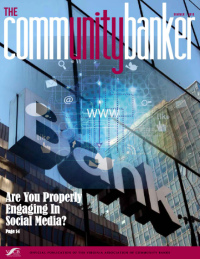 Much attention has been focused on the major areas of emphasis in the FFIEC Supplement to Authentication in an Internet Banking Environment (the Supplement) released June 28, 2011. Any analysis of the threats associated with Internet banking must necessarily begin with a risk assessment. Your risk assessments frequently reveal your controls need to be strengthened. The Supplement addresses in detail weaknesses which have developed in many Internet banking technical controls due to the persistence and creativity of fraudsters. A third area of emphasis, customer awareness and education, has led (or is leading) to a strengthening in customer education initiatives. However, an area with serious information security implications may have slipped under your radar for years.
Much attention has been focused on the major areas of emphasis in the FFIEC Supplement to Authentication in an Internet Banking Environment (the Supplement) released June 28, 2011. Any analysis of the threats associated with Internet banking must necessarily begin with a risk assessment. Your risk assessments frequently reveal your controls need to be strengthened. The Supplement addresses in detail weaknesses which have developed in many Internet banking technical controls due to the persistence and creativity of fraudsters. A third area of emphasis, customer awareness and education, has led (or is leading) to a strengthening in customer education initiatives. However, an area with serious information security implications may have slipped under your radar for years.

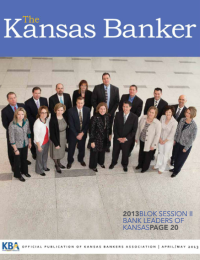 Vendor management is a crucial element of a bank's information security program. Proper due diligence includes, but is not limited to, an evaluation of the vendor's financial statements, business continuity planning and testing, legal and regulatory obligations, history and reputation, and independent audit reports. Typically, this evaluation is performed when selecting a new vendor and then periodically throughout the vendor relationship. A complete vendor management program should also include ongoing oversight of the vendor.
Vendor management is a crucial element of a bank's information security program. Proper due diligence includes, but is not limited to, an evaluation of the vendor's financial statements, business continuity planning and testing, legal and regulatory obligations, history and reputation, and independent audit reports. Typically, this evaluation is performed when selecting a new vendor and then periodically throughout the vendor relationship. A complete vendor management program should also include ongoing oversight of the vendor. Once upon a time there was a man who liked to help people. He was good at helping people reach their dreams in business and in their personal lives. He decided to open a bank so he could make good honest loans to good honest people.
Once upon a time there was a man who liked to help people. He was good at helping people reach their dreams in business and in their personal lives. He decided to open a bank so he could make good honest loans to good honest people.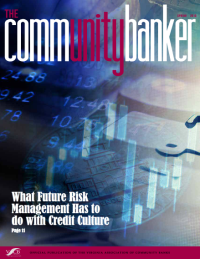 In January, the Federal Financial Institutions Examination Council (FFIEC) released proposed guidance titled, Social Media: Consumer Compliance Risk Management Guidance. According to the FFIEC, the proposed guidance "is intended to help financial institutions understand potential consumer compliance and legal risks, as well as related risks, such as reputation and operational risks associated with the use of social media, along with expectations for managing those risks."
In January, the Federal Financial Institutions Examination Council (FFIEC) released proposed guidance titled, Social Media: Consumer Compliance Risk Management Guidance. According to the FFIEC, the proposed guidance "is intended to help financial institutions understand potential consumer compliance and legal risks, as well as related risks, such as reputation and operational risks associated with the use of social media, along with expectations for managing those risks."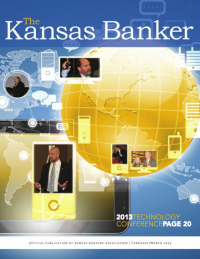 Does your bank have a social media risk management program? If you answered "no" to the previous question then you might have some work to do. Your financial institution faces risks associated with social media whether it is officially using social media as a communication channel or not. A risk management program should be implemented to identify, measure, monitor, and control the risks related with social media. There is now some information from the FFIEC that can assist you with controlling social media risks.
Does your bank have a social media risk management program? If you answered "no" to the previous question then you might have some work to do. Your financial institution faces risks associated with social media whether it is officially using social media as a communication channel or not. A risk management program should be implemented to identify, measure, monitor, and control the risks related with social media. There is now some information from the FFIEC that can assist you with controlling social media risks.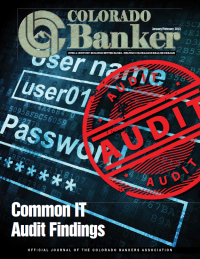 A common axiom in the world of information security is that convenience and security are inversely related, or in other words, as security increases, convenience decreases. You have, no doubt, experienced this in your bank as well as in your personal life. From a banking standpoint, annual IT audits and exams are probably not the most convenient use of your time, but they should be testing current controls and showing you controls to add, thereby increasing your physical and logical security. Below are some of the most common security issues I see in banks.
A common axiom in the world of information security is that convenience and security are inversely related, or in other words, as security increases, convenience decreases. You have, no doubt, experienced this in your bank as well as in your personal life. From a banking standpoint, annual IT audits and exams are probably not the most convenient use of your time, but they should be testing current controls and showing you controls to add, thereby increasing your physical and logical security. Below are some of the most common security issues I see in banks.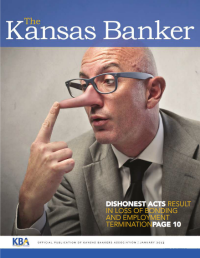 Holistic medicine has always made more sense to me than the more popular modern approach of taking away your symptoms so you can be comfortable as whatever it was that caused your disease still exists. Holism is related to or concerned with wholes or complete systems rather than with the analysis of, treatment of, or dissection into parts. As more and more of our favorite security controls have proven themselves less effective than we thought and hoped, I believe a successful security program has to be more holistic in nature.
Holistic medicine has always made more sense to me than the more popular modern approach of taking away your symptoms so you can be comfortable as whatever it was that caused your disease still exists. Holism is related to or concerned with wholes or complete systems rather than with the analysis of, treatment of, or dissection into parts. As more and more of our favorite security controls have proven themselves less effective than we thought and hoped, I believe a successful security program has to be more holistic in nature.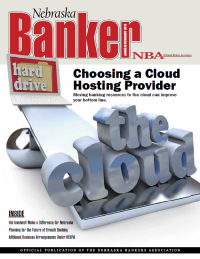 Sometime in the last twelve months has someone at your bank said...
Sometime in the last twelve months has someone at your bank said...